Sterling Physiotherapy is a trusted clinic in Hamilton with 100+ real Google reviews for Physiotherapy, Vestibular, TMJ Dysfunction, Massage therapy and Custom orthotics.
Knee pain can make everyday activities—like walking, climbing stairs, or even standing for too long—uncomfortable and frustrating. Whether it’s a dull ache, sharp pain, stiffness, or swelling, knee issues can affect your mobility and quality of life. If you’re searching for knee pain treatment in Hamilton or physiotherapy for knee pain near me, Sterling Physiotherapy is here to help.
Our experienced team of physiotherapists, registered massage therapists and chiropractor provides hands-on therapy, personalized rehab plans, and targeted strengthening programs to relieve pain, improve function, and help you move with confidence again. Our whole team comes together to make your recovery successful and get you back your life. Whether your knee pain is due to an injury, arthritis, overuse, or poor mechanics, we focus on finding the root cause and giving and supporting you with the right treatment and exercise plan all along your recovery journey.
Looking for Knee Pain near me, Knee Pain Physiotherapy Near Me in Hamilton? You’ve found the right place – Sterling Physiotherapy in Hamilton can help you with everything related to your knee pain. Our team is here to help – book an appointment and see the difference our care and compassion can make!
Neck Pain
Shoulder Pain
Back Pain
Runner's Knee
ACL Injury
Dizziness & Vertigo
Arthritis
Fibromyalgia
Balance & Gait
Concussion
TMJ Dysfunction Physiotherapy
Knee Pain
Dislocation
Tendonitis
Shin Splints
Tennis Elbow
Sports Injury
Rotator Cuff Injury
Ligament Sprains and Tears
Elbow, Wrist, and Hand Pain
Hip Pain
Located Inside Rexall, 505 Rymal Rd E, Hamilton, ON L8W 3X1
The knee is one of the most complex and heavily used joints in the body. Though easily ignored, your knee supports your weight, absorbs shock, and allows movement in multiple directions. Because of this, it is prone to injuries, wear and tear, and misalignment issues. Our knee is also overused in a lot of sports activities and running so athletes in Hamilton – we are here to take care of your knee pain. Not only does our team of physiotherapists in Hamilton provide recovery plan after injury but we also provide exercises for strengthening and conditioning so you can prevent injuries or future injuries.
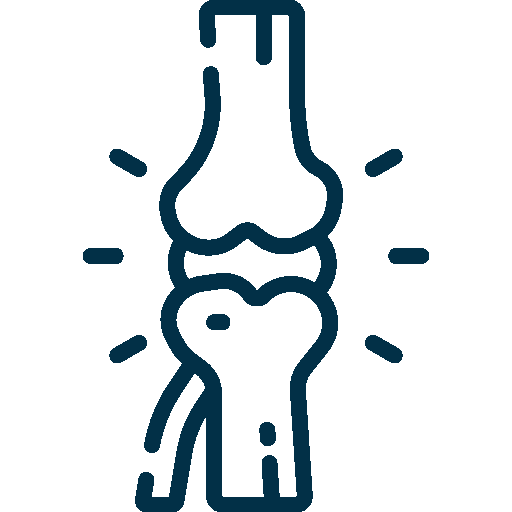
Cartilage in the knee joint wears down over time, causing stiffness and pain.
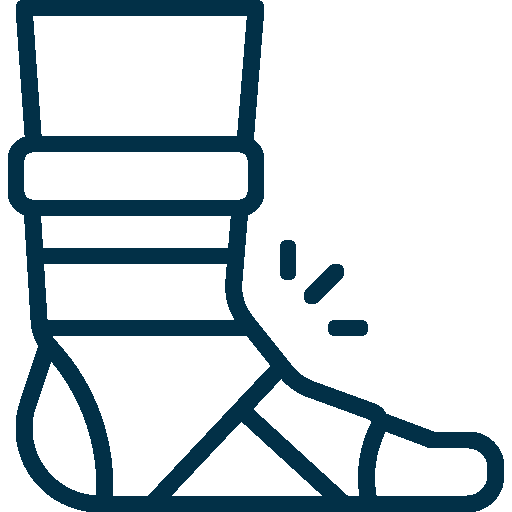
Sudden twisting or impact can tear knee ligaments, leading to instability.
The shock-absorbing cartilage in the knee can tear due to sudden movement or aging.
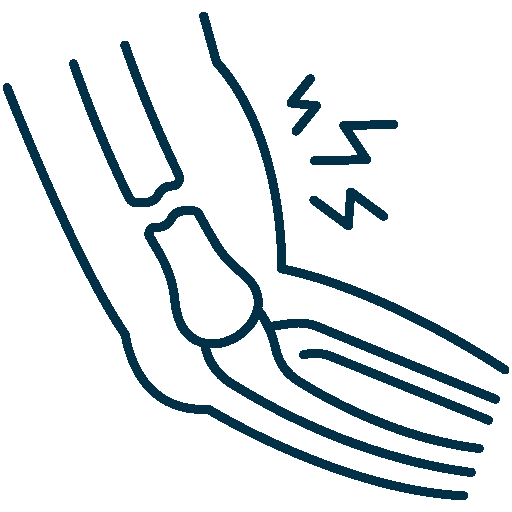
Overuse from repetitive jumping or running can irritate the knee tendons.
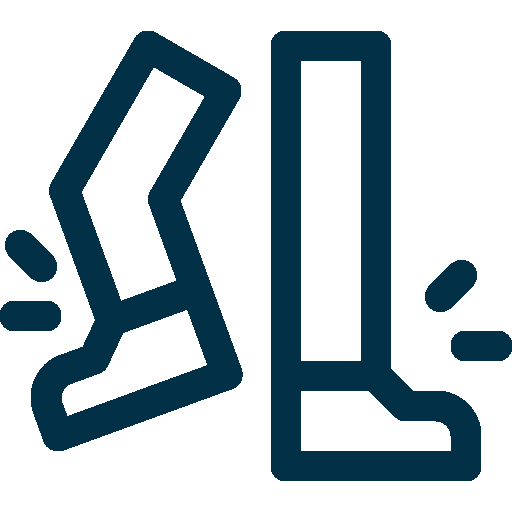
Poor knee tracking leads to pain around the kneecap, especially when bending the knee.

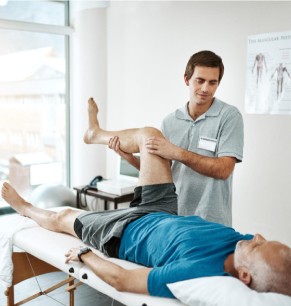
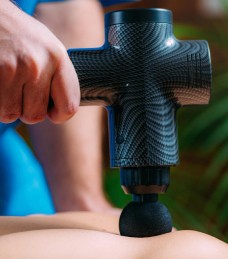
At Sterling Physiotherapy, we are committed to helping you recover from pain, regain mobility, and enhance your overall quality of life. Why let discomfort and stiffness hold you back? Our experienced physiotherapists in Hamilton create personalized treatment plans to help you get back to doing what you love.
Book your appointment today and take the first step toward a healthier, more active life in Hamilton!
Book Appointment
Common Knee Pain Conditions We Treat
Osteoarthritis is a common cause of knee pain, especially in older adults. It occurs when the cartilage in the knee joint wears down, leading to stiffness, swelling, and pain with movement.
If This Sounds Like You…
Your knees feel stiff in the morning, but the discomfort gets a little better after moving around. But after walking for a while, the pain comes back, making it hard to stay active. You might even notice some swelling, and stairs? Forget about it—stairs feel like climbing a mountain – right?
Our Approach:
We’ll focus on gentle mobility work, strengthening exercises, and pain management techniques to keep you active and comfortable. By building up the muscles around your knee, we’ll reduce stress on the joint. Heat therapy and hands-on techniques will help with stiffness, and we’ll also give you tips on modifying activities so you can move more without flare-ups. And why not Registered Massage Therapy session to complement the exercises and physiotherapy treatment plan. Electrotherapy including ultrasound and laser therapy benefits with quick pain relief and targeting the inflammation of the muscles, tendons around the knee.
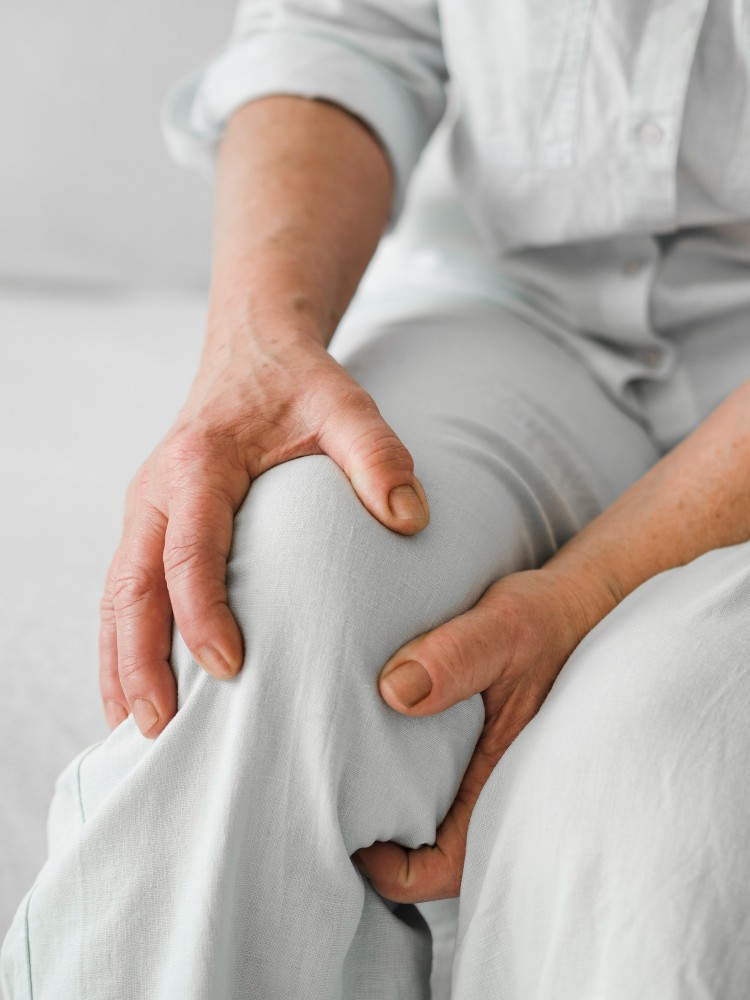
The knee’s ligaments (ACL, MCL, PCL, LCL) provide stability. Injuries to these ligaments often occur during sports, sudden twisting, or direct impact, leading to swelling, instability, and pain.
If This Sounds Like You…
You were playing sports, maybe running or making a sudden pivot, and you heard or felt a pop in your knee. Now, your knee feels unstable, like it could give out at any moment. Walking is tough, and putting pressure on it makes it worse. There’s swelling, and bending your knee feels restricted.
Our Approach:
First, we work on reducing swelling and regaining stability. We might recommend bracing at first to protect your knee, followed by balance and strength training to rebuild control. We focus on progressive rehab exercises to help you regain confidence in movement, whether that’s getting back to sports or just walking pain-free. Our physiotherapists may also recommend you some custom knee bracing in Hamilton that can help and support your recovery. Since knee is such a mobile joint and we use it for almost all our work, it’s prudent to wear a custom knee brace to heal your joint.
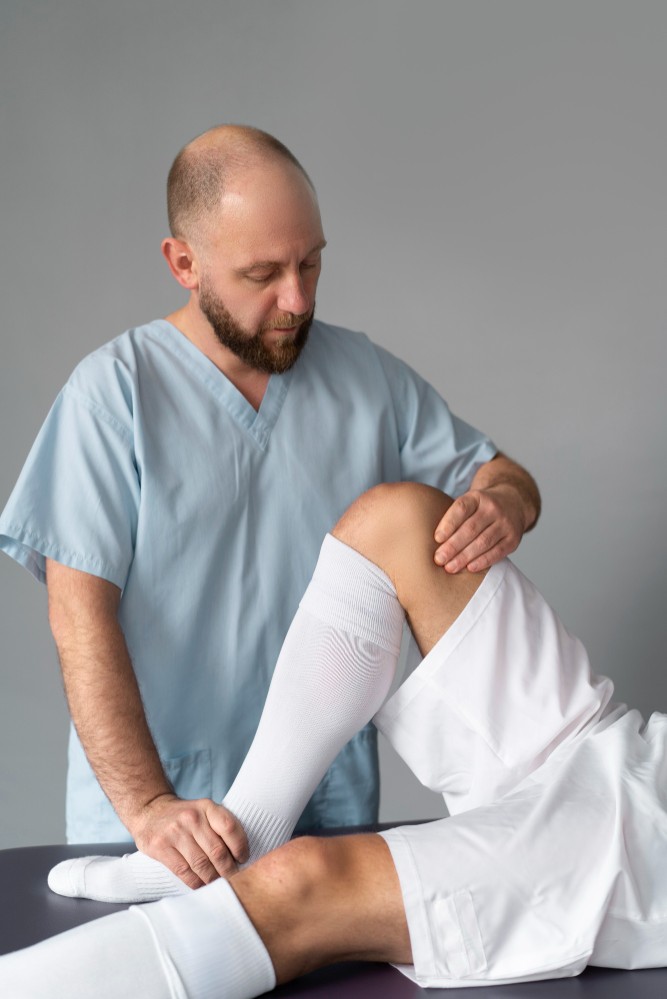
A meniscus tear occurs when the cartilage inside the knee is damaged, often from sudden movements like pivoting or squatting. It can cause swelling, pain, and difficulty fully straightening the knee.
If This Sounds Like You…
Your knee feels like it catches or locks when you move. You might hear a clicking or popping sound, and sometimes the pain flares up when twisting or squatting. You can still walk, but it doesn’t feel quite right, and you’re afraid of making it worse.
Our Approach:
We’ll focus on improving stability and reducing pressure on the meniscus with joint-friendly exercises and mobility work. We’ll also help restore your knee’s natural movement, so you don’t feel like your knee is “sticking.” If you’re having trouble bending your knee fully, manual therapy and stretching will help loosen things up.

Patellar tendonitis is common in athletes, runners, and people who jump frequently. It causes pain just below the kneecap, especially when running, jumping, or going downstairs.
If This Sounds Like You…
After running or working out, there’s a sharp pain just below your kneecap. It hurts to squat, jump, or even go down stairs. The pain might have started as mild discomfort, but now it lingers even when you’re at rest.
Our Approach:
We’ll focus on strengthening the knee tendons gradually with eccentric exercises that help the tendon heal. If your knee is inflamed, we’ll use soft tissue therapy and ultrasound therapy to help reduce irritation. We’ll also adjust your training routine so you can stay active while healing.
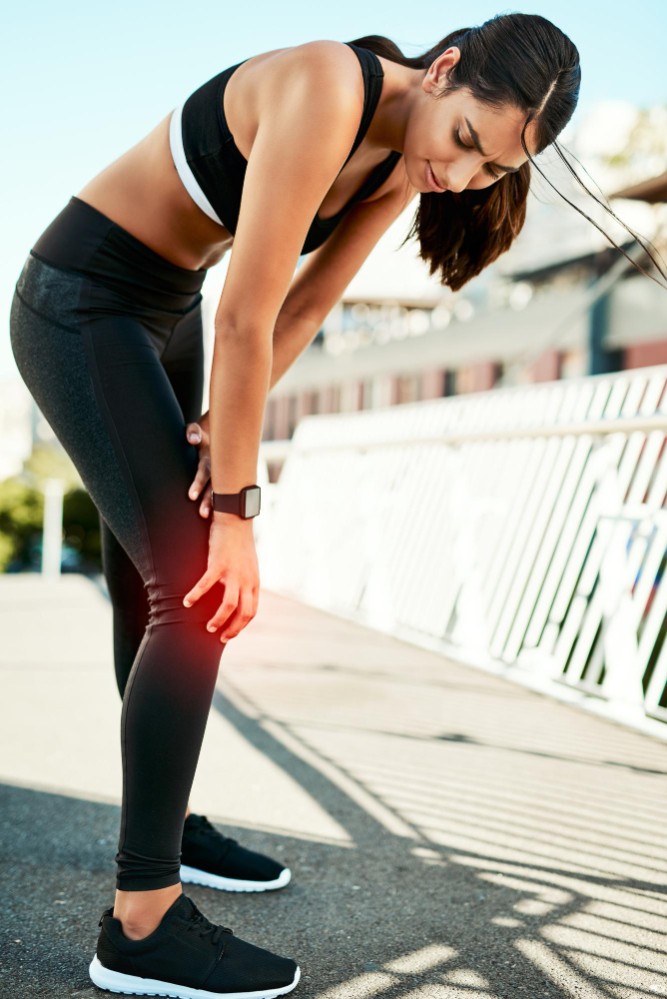
Runner’s knee happens when the kneecap doesn’t track properly, leading to pain, grinding, or discomfort when bending the knee.
If This Sounds Like You…
You love running or being active, but lately, your knee has been aching around the front, especially when going downhill or sitting for long periods. It doesn’t feel like a sharp injury, more like a dull, annoying pain that won’t go away.
Our Approach:
We’ll focus on correcting movement patterns so your kneecap tracks properly. Strengthening your hips and quads will take pressure off your knee, and we’ll use manual therapy and taping to ease discomfort while you recover.
